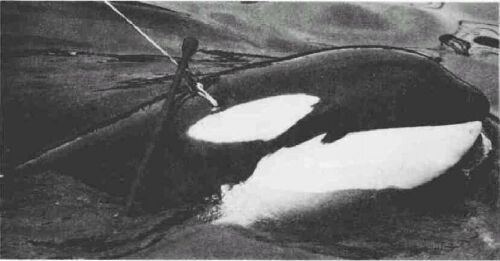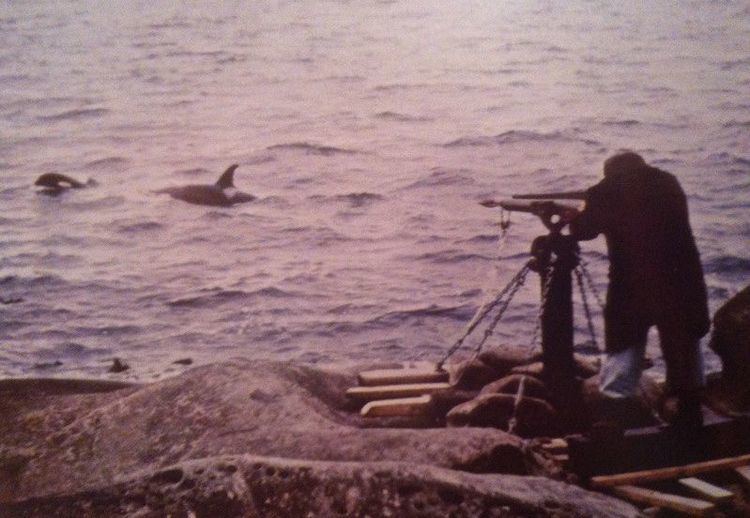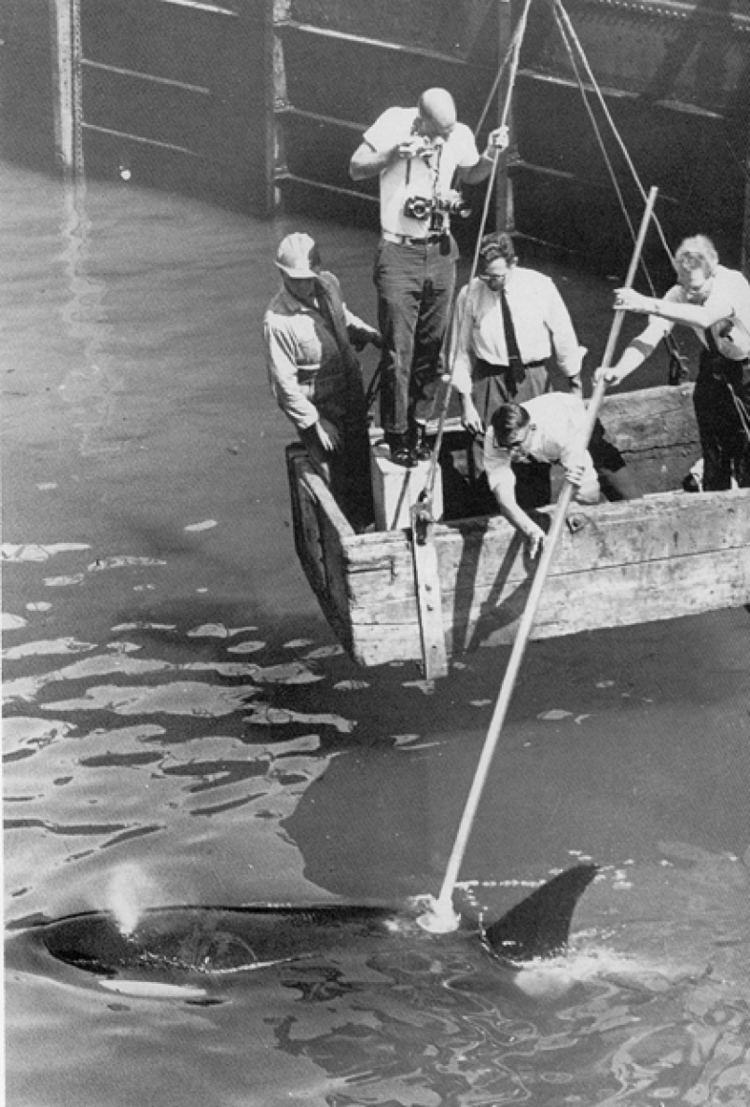Species Orcinus orca | ||
 | ||
Footage of moby doll one of the first ever killer whales in captivity
Moby Doll was the second orca (killer whale) ever captured or displayed in a public aquarium exhibit.
Contents
The 15 foot (4.6m) long, 1-ton male was captured in 1964 near East Point, Saturna Island in British Columbia. A sculptor, Samuel Burich, had been commissioned by the Vancouver Aquarium to kill an orca in order to construct a life-sized model for the aquariums' new British Columbia hall. Moby Doll was harpooned and shot at by Burich but did not die. The Vancouver Aquarium's founder director, Murray Newman, decided to tow the orca back to Vancouver and put him on display. Moby Doll was shown to the public in a pen at Burrard Drydocks but was listless and did not eat for the first two months in captivity. According to observers,


At the time, it was not known that "resident" killer whales ate only fish, not warm-blooded prey. After his keepers spent nearly two months offering a variety of inappropriate food items for a resident killer whale, someone offered a lingcod. The whale took it, and when offered more ended up eating 50 kg of cod that day. So little was known of killer whales at the time that furthermore, Moby Doll was mistakenly identified as a female. Most sources say that the whale was discovered to be a male only after his death, although according to one story, a four-year-old visitor witnessed the whale having an erection.

Moby Doll was popular locally and abroad. The whale's captivity afforded scientists the opportunity to study an orca and orca sounds up close for the first time. According to the obituary in The Times of London, "the widespread publicity – some of it the first positive press ever about killer whales – marked the beginning of an important change in the public attitude toward the species."

Vancouver journalist Mark Leiren-Young published a book on the capture of Moby Doll, titled The Killer Whale Who Changed the World, which has been long-listed for the 2017 RBC Taylor Prize, in 2016. Leiren-Young developed a feature documentary about Moby Doll that is currently in post-production. The documentary is set to be distributed by Kinosmith (the Canadian distributors of Blackfish). Leiren-Young also developed Moby Doll: The Whale that Changed the World, which aired as a radio broadcast November 7, 2014 on CBC Radio's Ideas with Paul Kennedy. At the 2014 Jack Webster Awards, Leiren-Young won Best Feature Story in radio for the broadcast. In October 2014, Leiren-Young wrote the article “Moby Doll” for The Walrus. The article is a finalist for the 2015 National Magazine Awards.

Moby doll

